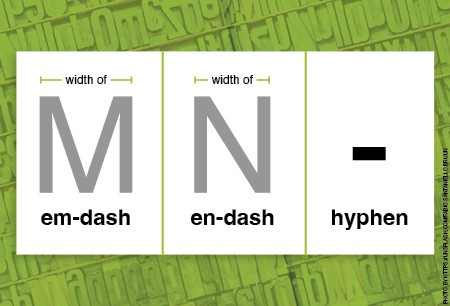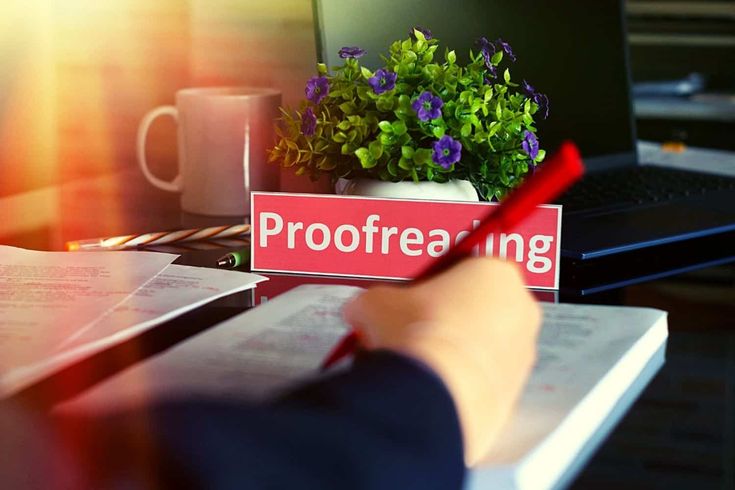Proofreading is an essential step in the writing process, ensuring that your content is polished, professional, and error-free. Whether you’re a student, writer, or professional, understanding the importance of proofreading and mastering the techniques can significantly enhance the quality of your work. This quick guide to proofreading will explain what proofreading is, why it matters, and how to do it effectively.
What is Proofreading?
Proofreading is the final step in the editing process, focusing on correcting surface errors such as grammatical mistakes, typos, punctuation errors, and formatting issues. Unlike editing, which may involve substantial changes to content, structure, and style, proofreading aims to refine the text, ensuring it is clear, consistent, and error-free.

What to Check When Proofreading
Thoroughly reviewing the text to ensure accurate language usage and well-constructed sentences, avoiding awkward phrasing and grammatical errors. Tools: Grammarly, ProWritingAid, Ginger Software.
Grammar and Syntax
Thoroughly reviewing the text to ensure accurate language usage and well-constructed sentences, avoiding awkward phrasing and grammatical errors. Tools: Grammarly, ProWritingAid, Ginger Software.
Punctuation
Confirming that all punctuation marks—commas, periods, quotation marks, etc.—are used correctly for clear communication. Tools: Grammarly, Hemingway Editor, Microsoft Word Spell Check.
Spelling
Identifying and correcting any typos or spelling mistakes to maintain professionalism. Tools: Grammarly, Microsoft Word Spell Check, Ginger Software.
Consistency
Ensuring that style, tone, terminology, and formatting are consistent throughout the document. Tools: ProWritingAid, Grammarly.
Formatting
Checking that the document follows the required guidelines or style sheets, including layout, font usage, and alignment. Tools: Microsoft Word Spell Check, Hemingway Editor.

Why is Proofreading Important? How it helps ensuring both accuracy and professionalism in any written content?
Proofreading is crucial for various reasons, primarily because it enhances the readability and professionalism of your content. It involves a thorough review of the text to correct errors and refine the writing, ultimately enhancing the overall quality and credibility of the work. Here’s a detailed explanation of how proofreading achieves this:
A. Correcting Spelling Errors
Misspelled words can change the meaning of a sentence or render it confusing. For example, confusing “complement” with “compliment” can lead to a misunderstanding of the content.
Proofreading Role:
Proofreading involves carefully checking each word for spelling errors, ensuring that every word is used correctly and enhances the overall clarity of the message.
B. Fixing Grammatical Mistakes
Grammatical errors, such as incorrect verb tenses, subject-verb agreement issues, or misplaced modifiers, can confuse readers and obscure the intended meaning. Fixing grammatical mistakes during proofreading involves identifying and correcting errors related to the structure and usage of language in a sentence.
Proofreading Role:
Here are some common examples of grammatical mistakes that can be fixed during proofreading:
1. Subject-Verb Agreement Errors
2. Incorrect Verb Tense
3. Misplaced Modifiers
4. Comma Splices
5. Run-on Sentences
6. Incorrect Pronoun Usage
7. Dangling Modifiers
8. Incorrect Use of Articles
9. Parallelism Errors
10. Improper Use of Prepositions
C. Correcting Punctuation Errors
Incorrect punctuation can alter the meaning of a sentence or make it difficult to read. For example, the difference between “Let’s eat, Grandma!” and “Let’s eat Grandma!” is a matter of life and death!
Proofreading Role:
Proofreading involves scrutinizing the punctuation to ensure that commas, periods, apostrophes, and other punctuation marks are used appropriately, preserving the intended meaning and improving readability. Here are more examples of common punctuation errors and their corrections:
1. Misplaced Commas
2. Unnecessary Commas Between Subject and Verb
4. Missing Periods
5. Incorrect Use of Apostrophes
6. Incorrect Use of Semicolons
7. Incorrect Use of Quotation Marks
8. Missing or Misplaced Hyphens
9. Missing Colons for Lists or Explanations
10. Incorrect Use of Dashes
11. Missing or Misplaced Parentheses
12. Misuse of Ellipses
D. Ensuring Consistency
Inconsistent use of terms, formatting, or style can confuse readers and disrupt the flow of the text. For example, using both “e-mail” and “email” in the same document can seem careless.
Proofreading Role:
Proofreading ensures consistency in terminology, capitalization, numbering, and formatting throughout the document. Consistent use of language and style reinforces the accuracy and coherence of the content.
E. Verifying Facts and Figures
Inaccurate facts, dates, names, or statistics can mislead readers and damage the credibility of the content.
Proofreading Role:
Proofreading often includes fact-checking to ensure that all the information presented is correct. This could involve double-checking dates, verifying names, or ensuring that statistics are accurately cited.
F. Ensuring Professionalism
Professionalism in writing is about presenting content that is polished, respectful, and aligned with the standards expected by your audience. Proofreading contributes to professionalism in the following ways:
1. Polishing the Language
Professional writing is clear, concise, and free from awkward phrasing or unnecessary jargon. Clumsy or overly complex sentences can make the writer seem inexperienced or unprofessional.
Proofreading Role:
Proofreading helps to refine the language, simplifying complex sentences, eliminating redundancy, and improving the overall flow of the content. This makes the writing more engaging and professional.
2. Ensuring Proper Tone and Style
The tone of writing should match the intended audience and purpose. For example, an overly casual tone in a formal business report can come across as unprofessional.
Proofreading Role:
Proofreading involves checking that the tone and style are appropriate for the audience and purpose. This could mean adjusting language to be more formal or ensuring that the tone remains consistent throughout the document.
3. Maintaining Formatting Standards
Proper formatting, such as consistent font usage, appropriate headings, and correct alignment, contributes to the professional appearance of the document. Poor formatting can make a document look unpolished and distract from the content.
Proofreading Role:
During proofreading, the document is reviewed to ensure that all formatting is consistent and adheres to any required guidelines, such as those specified by a publication or organization.
4. Enhancing Readability
Professional documents are easy to read and understand. Dense blocks of text, long sentences, or poor organization can make content difficult to digest, reducing its effectiveness.
Proofreading Role:
Proofreading helps to enhance readability by breaking up long paragraphs, improving sentence structure, and ensuring that ideas are clearly and logically presented. This makes the content more accessible and professional.
4. Demonstrating Attention to Detail
A document free of errors reflects a high level of care and attention to detail, which is essential in professional settings. Errors, even minor ones, can give the impression of carelessness.
Proofreading Role:
Proofreading is the final check that ensures every detail has been considered and polished. This demonstrates a commitment to quality and a respect for the reader’s time, both of which are hallmarks of professionalism.
How to Proofread Effectively?
Effective proofreading requires a systematic approach and keen attention to detail. Here are some strategies and techniques to enhance your proofreading skills:
Take a Break
After writing, take a break before proofreading. This helps you return with a fresh perspective, making it easier to spot errors.
Read Aloud
Reading your text aloud can help you catch awkward phrasing and errors that you might miss when reading silently.
Use a Ruler or Finger
Using a ruler or your finger to guide your eyes can help you focus on one line at a time, reducing the chances of missing errors.
Print it Out
Proofreading on paper can often be more effective than on a screen. It can help you spot errors that you might overlook on a digital device.
Check for One Type of Error at a Time
Focus on one type of error during each read-through. For example, first check for grammatical errors, then for punctuation, and so on.
Use Tools and Resources
Utilize proofreading tools and resources such as Grammarly, Hemingway, or the built-in spelling and grammar checkers in word processors.
Get a Second Pair of Eyes
Having someone else proofread your work can provide a fresh perspective and help catch errors you might have missed.
Review Style Guides
Familiarize yourself with style guides relevant to your writing, such as APA, MLA, Chicago, or specific organizational guidelines.
Focus on Common Mistakes
Be aware of common mistakes specific to your writing habits and pay extra attention to them during proofreading.
Maintain a Checklist
Keep a proofreading checklist to ensure you cover all aspects, including grammar, punctuation, spelling, consistency, and formatting.
Common Proofreading Mistakes to Avoid
Even seasoned proofreaders can fall prey to certain common mistakes. Here are a few to watch out for:
Over-reliance on Spellcheck
While spellcheck tools are helpful, they are not infallible. They may not catch homophones (e.g., their/there/they’re) or context-specific errors.
Skipping Headings and Subheadings
Errors in headings and subheadings can be particularly jarring for readers. Ensure these elements are also thoroughly proofread.
Ignoring Numbers and Dates
Numbers and dates are often overlooked. Double-check these elements for accuracy.
Missing Consistency Errors
Consistency in style, tone, and formatting is crucial. Ensure uniformity throughout your document.
Rushing the Process
Proofreading requires time and attention. Rushing through it increases the likelihood of missing errors.
Conclusion
Proofreading is an indispensable part of the writing process, enhancing the clarity, credibility, and professionalism of your content. By understanding what proofreading entails, why it is important, and how to do it effectively, you can significantly improve the quality of your writing. Remember, even the most skilled writers need to proofread their work to ensure it is error-free and polished.












